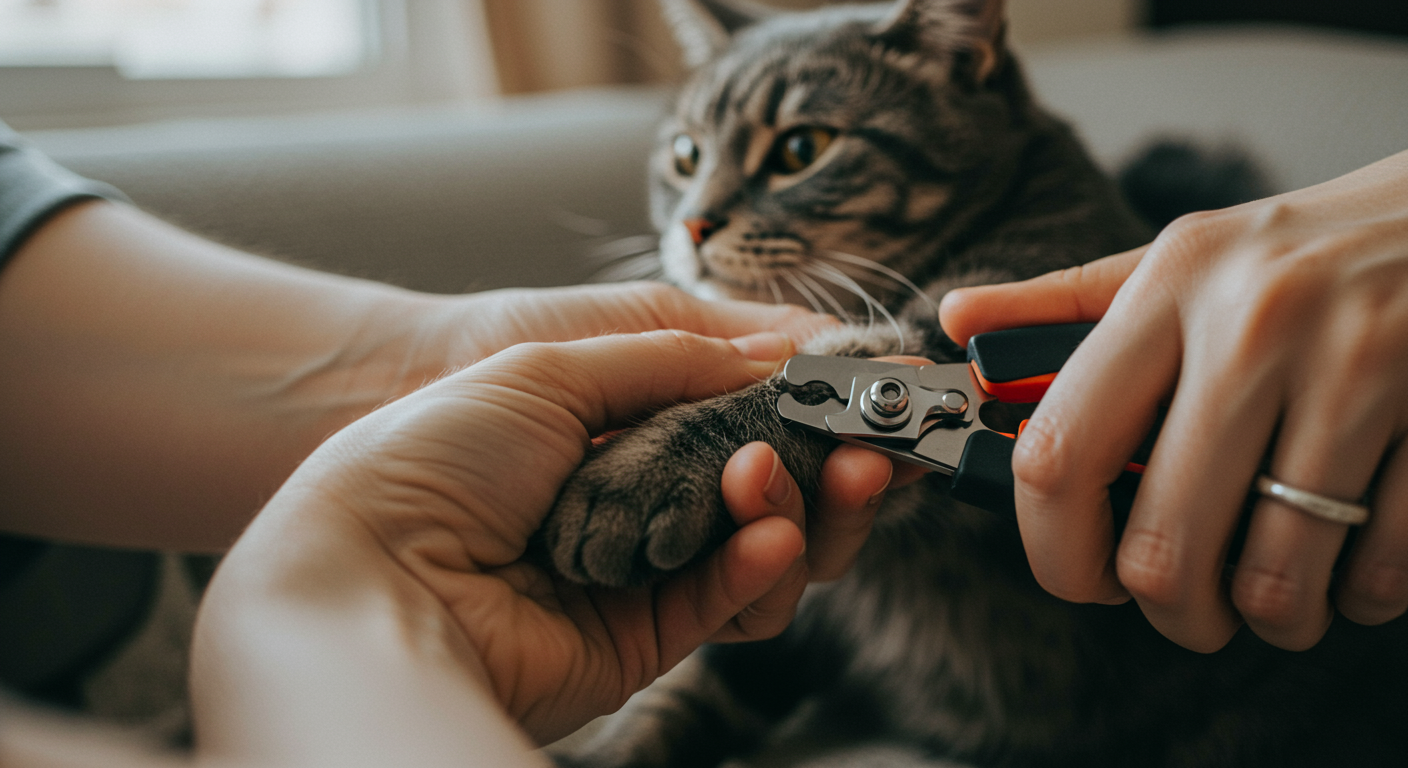As experienced cat parents, you understand the nuances of feline care. One often-overlooked aspect of cat grooming is nail trimming. Regular nail trims are essential for your cat's well-being, preventing painful ingrown nails and protecting your furniture from unwanted scratches. This guide delves into advanced strategies, ensuring a comfortable and safe nail-trimming experience for both you and your cat.

Deep Dive into Cat Nail Trimming for Experienced Pet Parents
Beyond the basics, successful nail trimming requires patience, the right tools, and a keen understanding of your cat's behavior. We'll cover advanced techniques to make the process smoother and less stressful for your feline companion.
Advanced Strategies and Insights
Choosing the Right Clippers:
- Guillotine Clippers: These clippers are favored by many professionals. They offer a clean, precise cut. For safety reasons, choose clippers specifically designed for cats. Check for a good grip and a blade that is sharp to prevent crushing the nail.
- Scissor Clippers: Some pet owners prefer these clippers as they offer more control. Be sure to select a pair with rounded tips for safety.
Properly Holding Your Cat:
- The 'Taco' Hold: Gently wrap your cat in a towel, leaving only the paws accessible. This provides a sense of security and limits movement.
- The Lap Method: If your cat is relaxed, hold them gently in your lap, facing away from you. Hold their paw firmly but gently, ready to trim.
Identifying the Quick:
- The 'quick' is the pink area of the nail containing nerves and blood vessels. Avoid cutting into it, as this will cause bleeding and pain. With practice, it becomes easy to identify.
- Use a bright light: If you're unsure, hold your cat's paw up to a bright light. The quick is easier to see through the nail.
Dealing with a Resistant Cat:
- Patience is Key: If your cat is resistant, don't force the issue. Stop and try again later. This is important so the cat associates nail trimming with positivity rather than fear.
- Positive Reinforcement: Offer treats and praise throughout the process. This helps your cat associate nail trimming with positive experiences.
- Gradual Approach: Trim only a few nails at a time, gradually increasing the number as your cat becomes more comfortable.
Optimizing Your Cat's Health & Comfort
Regular nail trimming is more than just a cosmetic procedure; it's a crucial aspect of your cat's overall health. It prevents ingrown nails, which can lead to infection and pain. It protects your furniture from scratches. A comfortable cat is a happy cat!
Case Study: Achieving Stress-Free Nail Trimming
- Scenario: A senior cat, previously fearful of nail trims.
- Solution: Using the 'taco' hold, offering favorite treats (see below), and trimming only one or two nails per session. The process was slow, but over time, the cat became more relaxed and cooperative.
Navigating Complex Cat Challenges
- Older Cats: Senior cats may have thicker, more brittle nails. Ensure your clippers are sharp. Take care and seek veterinary advice for any concerns.
- Anxious Cats: If your cat is exceptionally anxious, consult your vet. They may recommend a mild sedative to make the process safer and less stressful.
Integrating Advanced Care Practices
- Desensitization: Get your cat used to having their paws handled regularly. This makes nail trimming much easier.
- Regular Inspection: Check your cat's paws and nails weekly for any signs of injury or infection.
Long-Term Wellness & Longevity Tips
- Consistent Trimming: Aim to trim your cat's nails every one to two weeks, or as needed. This prevents them from growing too long.
- Provide Scratching Posts: Encourage your cat to scratch on appropriate surfaces, which helps to naturally shed the outer layers of their claws.
Expert-Level Cat Care Insights
- Consult Your Vet: If you're uncomfortable trimming your cat's nails, or if you have any concerns, consult your veterinarian or a professional groomer. They can provide expert guidance.
For effective and humane training, a PetSafe Training Clicker can be an invaluable tool for positive reinforcement.